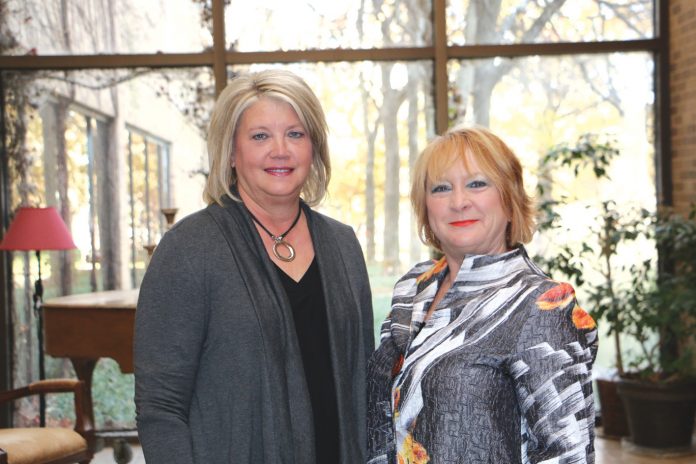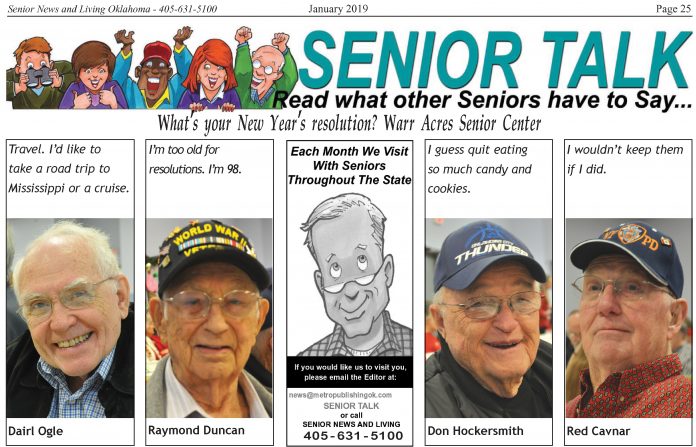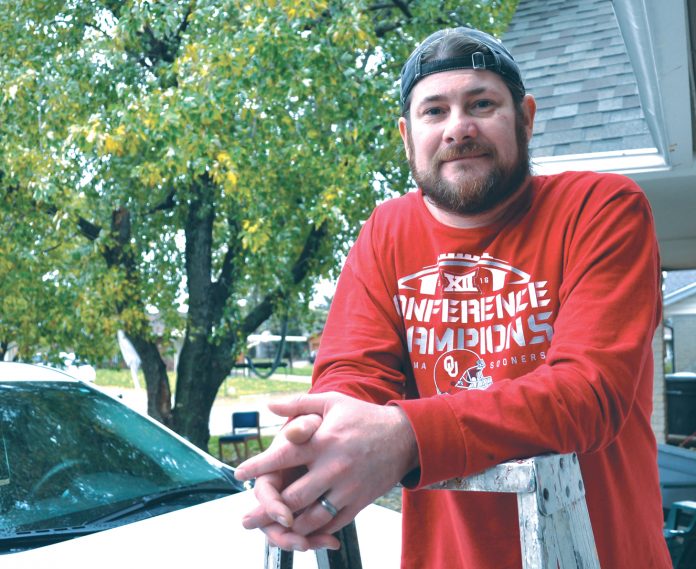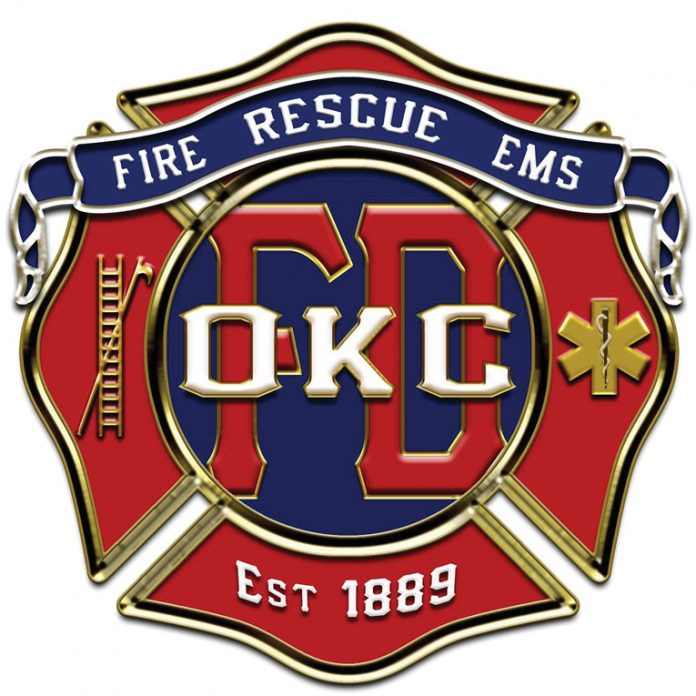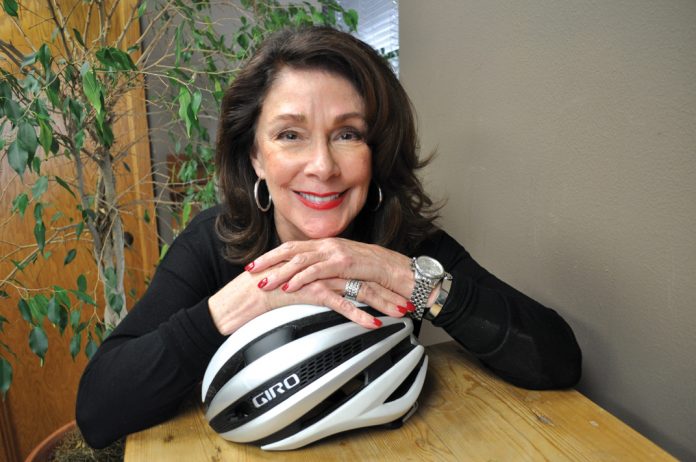Nationally, Oklahoma has one of the highest rates of staff turnover in nursing homes – 68 percent — a statistic that affects the quality of care that residents receive.
To address that problem, the Fran and Earl Ziegler University of Oklahoma College of Nursing is creating the Long-Term Care Leadership Academy, a training program that aims to develop leadership skills through education and mentoring for staff members at nursing homes across Oklahoma. The goal is that a resulting culture change will improve staff retention and the care that residents receive.
The program is funded by a nearly $400,000 grant from the Civil Money Penalties program, administered by the Oklahoma State Department of Health. When nursing homes are fined, that money goes to the Centers for Medicare and Medicaid Services, and part of it returns to the Oklahoma State Department of Health, where it can only be used for quality improvement projects that help residents of nursing homes.
“Improving the nursing home workplace culture by developing staff leadership skills is an important determinant of quality care for nursing home residents,” said Gary Loving, Ph.D., RN, interim dean of the OU College of Nursing.
Recent studies have shown staff turnover to be more important to nursing home outcomes than staffing or skill mix. Nationally, certified nursing assistants have the highest turnover rate at 51.5 percent, followed by registered nurses at 50 percent and licensed professional nurses at 36 percent. With an overall staff turnover of 68 percent, Oklahoma’s nursing homes lose significantly more employees than the national average of 43.9 percent. In addition, Oklahoma’s Medicaid reimbursement for nursing homes is one of the lowest in the nation, which adds to the difficulty of retaining good staff.
“It is extremely difficult to work on improving the quality of life and care of residents without adequate staff,” said Diana Sturdevant, Ph.D., RN, of the OU College of Nursing. “High turnover depletes limited resources and reduces productivity because of the added costs of hiring and training new employees.”
Sturdevant is leading the Long-Term Care Leadership Academy with OU College of Nursing colleague Teri Round, M.S., RN. The curriculum is being developed by incorporating evidence-based practices and the expertise of college faculty and nursing home experts.
The program will be geared toward three levels of nursing home employees. Level one consists of the director and assistant director of nursing and the administrator. Level two includes RNs and LPNs who have direct leadership responsibilities of co-workers. Level three consists of certified nursing assistants and their roles in affecting the quality of life and improved care for residents.
Four face-to-face regional meetings will be provided, with one day for each level’s education. The fourth day will be a half-day period for all three levels to practice the skills they’ve learned. Program topics include communication and teamwork, giving and receiving delegation, generational differences, person-centered care, culture change, co-worker engagement, retention and succession planning.
Leadership skills will be an important focus for nursing home supervisors, Sturdevant said. Nursing homes typically employ RNs as directors and assistant directors of nursing, and LPNs as charge nurses. They usually do not receive leadership training as part of their academic education.
“They often lack skills in conflict resolution, effective communication and inclusiveness,” Sturdevant said. “Many use an authoritative approach with top-down communication that does little to facilitate teamwork.”
Following the Long-Term Care Leadership Academy, staff members will continue to be mentored. They also will undertake projects designed to support culture change and to meet a need specific to each nursing home. Projects will potentially address antibiotic stewardship, infection prevention, antipsychotic medication reform and others.
“The OU College of Nursing faculty and staff have expertise in leadership training, development and implementation of quality improvement processes and systems change,” Round said. “We are excited to work with nursing home staff members across Oklahoma on meaningful ways they can retain staff and create a better culture for both employees and residents.”
OU College of Nursing Receives Grant to Provide Nursing Home Leadership Training
‘Oklahoma!’ royalties: A gift that keeps on giving at OMRF
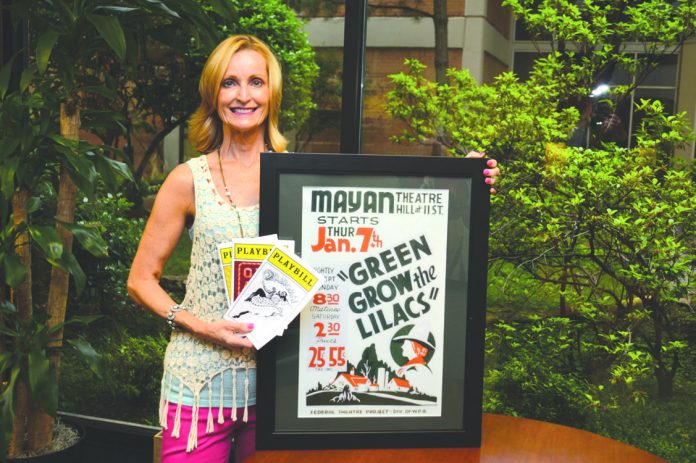
The Oklahoma Medical Research Foundation has received its share of interesting donations over the years. Along with the typical gifts made by check and credit card, there have also been cars, houses, jars of change collected at a lemonade stand, and even a toy soldier collection.
But none quite rival the estate gift that Claremore’s William Edgar Riggs left to the Oklahoma City nonprofit.
Riggs’ brother Lynn penned “Green Grow the Lilacs,” the 1931 play that Richard Rodgers and Oscar Hammerstein II used as the basis for the musical “Oklahoma!” When Lynn died, he willed equal shares of his 1-percent royalty on the musical to William Edgar and his three other siblings.
William Edgar lost his wife to heart disease and his daughter to cancer. So, when he passed away in 1977, he left his royalty share to OMRF to benefit research for those two diseases.
“It was a really generous and foresighted thing to do,” said OMRF President Stephen Prescott, M.D.
With the gift, OMRF receives one-quarter of 1 percent of the musical’s box office share each year.
The show enjoyed a series of revivals from 1979 through 2002, including two on Broadway and one in London’s West End starring Hugh Jackman, and is still performed approximately 700 times a year. As a result, William Riggs’ gift has now provided OMRF researchers with more than $700,000.
“I’ve worked in the nonprofit sector my whole life, but I’d never heard of a donation like this until I joined OMRF,” said Penny Voss, OMRF’s vice president of development. “It truly is a gift that keeps on giving.”
Indeed, the donations will continue as long as “Green Grow the Lilacs” remains under copyright. In 2017, OMRF received just over $10,000 in “Oklahoma!” royalties.
With “Oklahoma!” celebrating its 75th anniversary in 2018, the musical saw a surge in the number of productions. That should mean a corresponding boost in revenues for OMRF.
“Even though OMRF didn’t yet exist when Lynn Riggs wrote his play, I hope he’d find it fitting that his work benefits Oklahoma’s homegrown research institute,” said Voss.
Grassroots support from Oklahomans in all 77 counties helped make OMRF a reality in 1950. “Those are the same kind of people portrayed in the musical—strong, caring, forward-looking,” she said. “We still see that spirit in our donors today.”
Jan/Feb AARP Drivers Safety Classes
Date/ Day/ Location/ Time/ Registration #/ Instructor
Jan3/ Thursday/ Okla. City/ 9 am – 3:30 pm/ 951-2277/ Varacchi
Integris 3rd Age Life Center – 5100 N. Brookline, Suite 100
Jan 8/ Tuesday/ Yukon/ 9 am – 3:30 pm/ 350-7680/ Kruck
Dale Robertson Center – 1200 Lakeshore Dr.
Jan 8/ Tuesday/ Midwest City/ 9 am – 3:30 pm/ 691-4091/ Palinsky
Rose State Convent. Learning Center – 6191 Tinker Dia. room 203
Jan 11/ Friday/ Okla. City/ 9 am – 3:30 pm/ 951-2277/ Edwards
S.W. Medical Center – 4200 S. Douglas, Suite B-10
Jan 22/ Tuesday/ Mustang/ 9 am – 3:30 pm/ 376-3411/ Kruck
Mustang Senior Center – 1201 N. Mustang Road
Jan 28/ Monday/ Shawnee/ 9:30 am – 3:45 pm/ 818-2916/ Brase
Shawnee Senior Center – 401 N. Bell Street
Jan 29/ Tuesday/ Okla, City/ 8:30 – 3:30 pm/ 773-6910/ Kruck
Healthy Living Center – 11501 N. Rockwell Ave.
Feb 7/ Thursday/ Okla. City/ 9 am – 3:30 pm/ 951-2277/ Varacchi
Integris 3rd Age Life Center – 5100 N. Brookline, Suite 100
Feb 8/ Friday/ Okla. City/ 9 am – 3:30 pm/ 951-2277/ Edwards
S.W. Medical Center – 4200 S. Douglas, Suite B-10
The prices for the classes are: $15 for AARP members and $20 for Non-AARP. Call John Palinsky, zone coordinator for the Oklahoma City area at 405-691-4091 or send mail to: johnpalinsky@sbcglobal.net
When Will Medicaid Pay for Nursing Home Care?
Dear Savvy Senior,
What are the eligibility requirements to get Medicaid coverage for nursing home care?
Caregiving Daughter
Dear Caregiving,
The rules and requirements for Medicaid eligibility for nursing home care are complicated and will vary according to the state where your parent lives. With that said, here’s a general, simplified rundown of what it takes to qualify.
Medicaid Eligibility
Medicaid, the joint federal and state program that covers health care for the poor, is also the largest single payer of America’s nursing home bills for seniors who don’t have the resources to pay for their own care.
Most people who enter nursing homes don’t qualify for Medicaid at first, but pay for care either through long-term care insurance or out-of-pocket until they deplete their savings and become eligible for Medicaid.
To qualify for Medicaid, your parent’s income and assets will need to be under a certain level that’s determined by their state. Most states require that a person have no more than about $2,000 in countable assets that includes cash, savings, investments or other financial resources that can be turned into cash.
Assets that aren’t counted for eligibility include their home if it’s valued under $560,000 (this limit is higher – up to $840,000 – in some states), their personal possessions and household goods, one vehicle, prepaid funeral plans and a small amount of life insurance.
But be aware that while your parent’s home is not considered a countable asset to determine their eligibility, if he or she can’t return home, Medicaid can go after the proceeds of their house to help reimburse their nursing home costs, unless a spouse or other dependent relative lives there. (There are some other exceptions to this rule.)
After qualifying, all sources of your parent’s income such as Social Security and pension checks must be turned over to Medicaid to pay for their care, except for a small personal needs allowance – usually between $30 and $90.
You also need to be aware that your parent can’t give away their assets to qualify for Medicaid faster. Medicaid officials will look at their financial records going back five years to root out suspicious asset transfers. If they find one, their Medicaid coverage will be delayed a certain length of time, according to a formula that divides the transfer amount by the average monthly cost of nursing home care in their state.
So if, for example, your parent lives in a state where the average monthly nursing home cost is $5,000 and they gave away cash or other assets worth $50,000, they would be ineligible for benefits for 10 months ($50,000 divided by $5,000 = 10).
Spousal Protection
Medicaid also has special rules for married couples when one spouse enters a nursing home and the other spouse remains at home. In these cases, the healthy spouse can keep one half of the couple’s assets up to $120,900 (this amount varies by state), the family home, all the furniture and household goods and one automobile. The healthy spouse is also entitled to keep a portion of the couple’s monthly income – between $2,030 and $3,022. Any income above that goes toward the cost of the nursing home recipient’s care.
What about Medicare?
Medicare, the federal health insurance program for seniors 65 and older, and some younger people with disabilities, does not pay for long-term care. It only helps pay up to 100 days of rehabilitative nursing home care, which must occur after a hospital stay.
Find Help
For more detailed information, contact your state Medicaid office (see Medicaid.gov for contact information). You can also get help from your State Health Insurance Assistance Program (see ShiptaCenter.org), which provides free counseling on all Medicare and Medicaid issues.
Send your senior questions to: Savvy Senior, P.O. Box 5443, Norman, OK 73070, or visit SavvySenior.org. Jim Miller is a contributor to the NBC Today show and author of “The Savvy Senior” book.
Mercy Health Foundation to Host Annual Gala on Jan. 18

Fundraiser will feature a performance by country music group Runaway June
Next month, break out your dancing shoes to benefit a great cause at the Mercy Gala, hosted by Mercy Health Foundation Oklahoma City.
The annual fundraiser will be held on Friday, Jan. 18, at 6 p.m. at the National Cowboy & Western Heritage Museum in Oklahoma City. This year’s event will feature dinner, a silent auction, a raffle, a special performance by country music trio Runaway June and an after party hosted by DJ Kirby.
Recognized by Billboard as the “Next Hot Trend in Country Music,” Runaway June is the first all-female trio in more than a decade to earn two Top 40 hits. The group also received a 2018 Academy of Country Music nomination for “New Vocal Duo or Group of the Year.” They just released their debut project for Wheelhouse Records and are preparing to join Carrie Underwood on tour in May.
“For more than 30 years, the Mercy Gala has been a way for the community to come together to help those in need receive medical services and we are so thankful for that support,” says Lori Cummins, executive director of the Mercy Health Foundation Oklahoma City. “And, we are thrilled to have Runaway June performing and DJ Kirby hosting our after party this year.”
DJ Kirby has a distinct style of mixing and blending classic party music spanning every music genre. He has performed with The Black Eyed Peas, Bon Jovi, Britney Spears, Maroon 5, Justin Bieber, Jay-Z, Justin Timberlake, Kid Rock and many others. He also has a mix show every Saturday on eight different radio stations across the country.
Because Mercy provides care to all patients, regardless of their ability to pay, all proceeds from the gala will support the charitable needs of patients at Mercy. Last year’s event raised more than $280,000 for programs like Mercy’s Project Early Detection, which provides free breast health services to uninsured or underinsured Oklahomans.
This year’s event will help support the charitable needs of patients at Mercy in Oklahoma City to include the Mercy Good Samaritan Clinic, Project Early Detection and other forms of patient assistance like help with medications, transportation, nutrition and more.
To learn more about the gala, to purchase tickets or to become an event sponsor, visit www.bit.ly/MercyGALA19 or call (405) 486-8944. Individual tickets are $200 and sponsorship opportunities are still available.
Jack of all trades: RN makes house calls
By Bobby Anderson, staff writer
Growing up on the family farm, Brandon Steffens, RN, never saw a contractor’s truck pull up in the driveway.
No plumber, no electrician, no drywall guy and no painter ever set foot inside the house.
“I just grew up always working on the house with my dad. We never hired anything out,” Steffens said. “We did all the electrical, all the plumbing – whatever it was we did it ourselves.”
That work ethic carried the eventual float pool nurse through a seven-year stint with Home Depot and now to his current side business, Brandon’s Home Improvement.
Before he was working in the ICU and the ER, Steffens was plying the knowledge bestowed on him by his dad.
Elbow grease and a passion to make things better would make his dad proud.
Then nursing school and working with his hands took on a new meaning.
“People come to you in nursing in their worst states and it’s an emergency,” Steffens said, taking a break from an apartment remodel in Midwest City. “They’re dilapidated, sick or injured and we get the opportunity to put our hands on them and fix them and make things new again.”
Working nights four to five days a week for the past five years brought Steffens to a crossroads.
“Everyone told me to watch out, you’ll get burned out,” Steffens recalled. “I said ‘No, I wouldn’t’ but you get burned out.”
So Steffens decided to pour more of his time and talents into something else.
Being a contractor was a vocation he held before nursing. That took him into Home Depot, where he oversaw the entire local install business for the big box company.
Whether it be a sink or a door, a microwave or a dishwasher, Steffens was in charge of the contractors who carried out the work under Home Depot’s name.
It taught him even more about the business.
“I realized there is a huge need out there for people who just don’t know how to do home improvements or they didn’t have the time,” he said.
Or too often, they didn’t have a ton of money.
Home improvements are expensive. Steffens knows all too well the retail costs associated with a remodel.
And he knows the sizeable markup that goes with it.
Figuring things out and finding ways to save people a dollar are a challenge for him. Sometimes he challenges himself right out of a bigger check.
He showed up for a recent garage door opener install job one night. The customer had the new opener waiting for him in the box.
Steffens went up to unplug the old wire and noticed an electrical short.
“I saved him $400,” Steffens said. “I like that sense of accomplishment.”
For some reason Steffens’ specialty has always been tile. Projects that most contractors avoid like the plague, Steffens has a certain affinity.
“Most contractors shy away from it because it’s hard, lot of up and down and on your knees. That never bothered me,” he said. “I like the perfection of it, just to lay each piece of tile in a certain way. It’s kind of like art because you can do different things with tile that really finishes a house off.”
For Steffens, the business venture has been a source of freedom. It’s not a straight 12-hour gig, meeting sometimes unreasonable expectations with limited resources.
“I like the sense of accomplishment,” Steffens said. “In nursing, I talk to people all day long and doing home improvement I get a lot of alone time. I get to just lose myself in work for some time and get to be creative.”
“You go in and see something nasty and absolutely turn it around and make it new,” says Steffens, who has remodeled two of his own homes. “I like to touch every surface. I like when people come in to a house I’ve remodeled and every surface in that house has been touched by me.”
He admits he really hasn’t advertised since taking on more work.
He hasn’t had time.
“You do a good job and people tell people,” explained Steffens, who can be found on Facebook under Brandon’s Home Improvement. “People are always asking if you know anybody. It just snowballs from there.”
With four kids, age five, 10, 15 and 22 – Steffens has a full plate at home. But he’s already taken a couple of his kids along to start learning the trade.
“My 10-year-old has shown interest,” Steffens beamed. “He helped with carpentry on a door frame. He had all these wonderful better ideas how to fix it. There’s no science behind it.”
But there’s definitely an art.
And for now, the combination of science and art suits this nurse just fine.
Be aware of scammers this tax season
The Oklahoma City Police Department’s Triad program has been around for close to 18 years. Triad is a program which provides a joint approach to crime issues which affect older citizens and provides the enhanced delivery of law enforcement services to our more mature population. Triad sponsors crime prevention and victim/witness programs for older persons, offers reassurance programs for older persons to reduce fear and provide moral support; provides a forum for law enforcement and the community to share needs, concerns, and develop solutions. TRIAD unites senior citizens, sheriffs and local police to identify problem areas for senior citizens in order to develop and implement community-wide solutions.
The Oklahoma City Police Department started the Triad program in November 2001. Sheryl Presley is the department’s Triad coordinator and runs the Triad groups in the metro. Triad North meets the second Thursday of the month at 1:30pm at India Shrine. Triad South meets the third Thursday of the month at 1:30pm at Woodson Senior Center 3401 S May, and Triad East meets at our Springlake Station (4116 N. Prospect) on the third Monday of each month at 10:00am (except January & February when the meetings are bumped to the fourth Monday of the month). There are no meetings in September & December. Each meeting typically features a guest speaker who provides informative information. Current scams and frauds targeting senior citizens are also discussed.
Tax season is a time when we see IRS scam ramp up. Seniors are targeted primarily because they are viewed as easy prey. Usually the scammer will call from a number they have spoofed to make it look like it is the IRS calling. The caller will usually say something like they are with IRS and you owe them money. The victim, thinking that it is the IRS, reacts out of fear and suddenly believes that they had better pay the IRS. First, the IRS will never call you if you owe them money. Second, the IRS will not threaten you and tell you that you have to pay them right now. If you owe money to IRS, they will send you a letter in the mail. If you choose to ignore it, they will send you another letter. If you still ignore the letter, then the IRS will turn your case over to a collection agency. This type of scam is something we go over in our meetings with our Triad members and talk to them about what to do. You can also report the call to the IRS impersonation scam line at 1-800-366-4484 or website at www.tigta.gov.
Scammers also use a ploy known as phishing to obtain your personal information. Phishing scams are typically carried out by a scammer sending you an email that claims to be from a financial institution, business, or a government entity like the IRS. The email usually asks for personal identifying information such as your date of birth or your social security number. It is not uncommon for the scammer to ask for your credit card number or the PIN from you debit card. Never give out this type of information to anyone who requests it in the form of an email. Again, the IRS will not send you an email claiming that you owe them back taxes.
This is but one of several IRS scams of which senior citizens should be mindful. Over the past few years, we have seen a trend of thieves stealing identities to fraudulently obtain IRS refund checks. It begins when a scammer assumes someone else’s identity and then fills out a tax a tax return in that person’s name. The IRS then sends the scammer victim’s tax refund check, and since they have already assumed
the victim’s identity, they simply cash the check and pocket the money. Please remember that if something seems suspicious, always err on the side of caution and call police.
A great way for senior citizens in our community to stay current on the latest scams and threats is to get involved in Triad. Having knowledge of scams and crimes targeting the elderly is a great way to help yourself stay safe.
If you have questions regarding Triad, please contact Sheryl Presley at 316-4336. Sheryl is also available at no charge to give presentations on scams, identity theft, mail safety, neighborhood safety, personal and home safety, holiday shopping tips, purse safety, and elder abuse.
Born to ride
by Bobby Anderson, Staff Writer
Going and doing. That’s what brings Becky Grantham the most joy.
And at 70, the former professional cyclist has no plans of slowing down anytime soon.
Grantham has a passion and love for people. Quite simple she loves living, working, working out, riding her bike out on the road and being healthy and fit.
She qualified for the 2013 National Senior Olympics in cycling and she plans to start rowing lessons this summer, with hopes of being on a Masters team.
“I love teams in anything,” she said. “I love to learn, grow and spending time with family and friends. I love fresh flowers, organic whole foods, good wine, music and the great outdoors. I love challenges and lots of adventure. I adore and cherish my children and grandchildren.”
Her life story reads like one straight out of Hollywood.
She earned the nickname “Fire Starter” from colleagues with her solid record of launching new products and start-up ventures. Her enterprising spirit allowed her the opportunity to own and manage a successful talent agency and develop into a sought-after casting director in a state not well represented in the field.
She continues to find success in many different industries. As a founding partner in BAR M MUT LLC in Oklahoma, she developed an award-winning marketing program that targeted ranchers, farmers, hunters and commercial nurseries within an eight-state region becoming the top dealer in the nation.
She excelled in the medical industry for more than 15 years, having the distinction of being recruited and promoted by industry leaders.
A lover of the arts, fitness, health and outdoor living, she has cycled century rides (100 miles in length) for many fundraising events and even enjoyed a couple of years as a professional cyclist for a philanthropic team out of Texas.
She took the gold medal in Oklahoma’s 2012 time trial and road race in her age division.
Other passions include being an accomplished competitive rider of Show Hunters and Jumpers, as well as being a whipper-in for Fox Hunting.
The love of gardening led her to achieve a Master Gardener accreditation.
As an advocate for others, she’s held many leadership roles within her church and community serving and lobbying for the wellbeing of children and woman. In addition, she has volunteered on missions to Honduras and within inner-city Oklahoma City and is a strong and passionate advocate against domestic violence.
“Very rarely do I see someone my age out there cycling,” said Grantham, who now works as a relationship developer at Laura Lynn’s Home Care. “Even at my age to train for a century ride takes a lot out of me. I have to train long and consistently so that I’m really prepared.”
Training for a century ride requires lots of time on the bike as well as time in the gym.
“Whenever you cycle year after year after year your muscles almost get locked up so you have to do exercises in the opposite direction to keep from locking up,” she said. “All of a sudden your legs aren’t working like they did. I don’t remember that me being a big deal when I was younger but it is becoming a bigger deal to me I’m noticing.”
“Every chance I get I try to ride on the road but I’ve gotten to the point where I’m becoming more of a fair weather rider. When I was younger I would get out and ride in 40-degree temperature without thinking twice but now I like it in the 50s at least.”
It was her son who got her hooked on cycling. Her first bike was the one he had when he was 12.
“It was a horrible old bike but I figured if I could ride that and enjoy it …” she said. “I just kept increasing the quality of my bike over time.”
“Probably the thing I enjoy the most is my psyche and the endorphins, it’s not just for the moment. If you cycle a lot you have more energy than you can imagine. It’s very upbeat. It’s endorphins that bring about contentment and happiness.”
And she kept increasing her mileage.
Grantham uses all that energy to keep up with her eight grandchildren, one great granddaughter and three children.
She wants to inspire others to do what they love and remain active.
It’s worked for her for her entire life.
OSDH Encourages Preparedness for Winter Weather
The Oklahoma State Department of Health (OSDH) encourages the public to take safety precautions for the upcoming winter weather. Proper planning can reduce the risk of injury and illness while also ensuring a family is prepared for a major winter weather event.
Cold outdoor temperatures require residents to monitor not only their home temperature, but their body temperature as well. Reports from the Centers for Disease Control and Prevention (CDC) advises infants less than 1 year of age should never sleep in a cold room because infants lose body heat more easily than adults. Room temperatures should remain above 65 degrees.
In a sleeping area, babies should not be wrapped in blankets, but rather dressed in warmer clothing such as footed pajamas. Also, a baby’s face and head should not be covered while sleeping. It is important not to over bundle a baby, because overheating can be dangerous as well. Parents and caregivers should watch for signs of overheating, such as sweating or the baby’s chest feeling hot to the touch. If a comfortable indoor temperature cannot be maintained, temporary arrangements should be made to stay elsewhere.
It is also important for adults age 65 and older to remain in a warm environment as they often make less body heat because of a slower metabolism and less physical activity.
Scott Sproat, director of the OSDH Emergency Preparedness and Response Service, said it’s important to use caution when heating a home with a fireplace, space heater or wood stove, using them only when they are properly vented.
“You can protect yourself from carbon monoxide (CO) poisoning by installing a battery-operated CO detector,” said Sproat. “Never use generators, grills, camp stoves, or similar devices inside the house, in basements, in garages, or near windows. It’s also important to have chimneys cleaned and inspected each year.”
Other tips to prepare for winter weather include:
*Wear multiple layers of clothing to stay warm, as well as a hat, scarf, mittens, a water-resistant jacket and boots. Stay as dry as possible, as water against the skin from wet clothing can chill the body quickly.
*Be prepared if basic services such as water, gas, electricity or telephones are cut off for an extended period of time. Those who depend on electricity to operate medical equipment should have alternate arrangements.
*Vehicles should be winterized before winter storm season. Check the tread on all tires and make sure they are not too worn to risk losing traction on the road. Keep the gas tank full for emergency use and to keep the fuel line from freezing.
*Carry extra clothing, blankets and high energy snacks, such as trail mix or protein bars in your car for protection if the car stalls.
*Bring pets/companion animals inside during winter weather. Move other animals or livestock to sheltered areas with non-frozen drinking water.
*Stay informed. Know what National Weather Service winter storm and blizzard watches and warnings mean. Learn more about weather advisories at nws.noaa.gov .
For more information about preparing for winter weather and other events, visit www.ready.gov.


